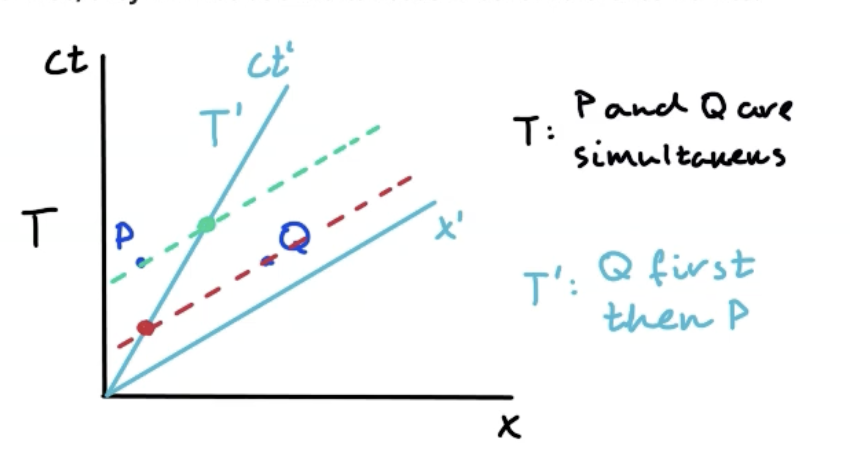A.5 Relativity
1/30
There's no tags or description
Looks like no tags are added yet.
Name | Mastery | Learn | Test | Matching | Spaced |
|---|
No study sessions yet.
31 Terms
Reference frame
Set of coordinates to determine different characteristics of objects in that frame
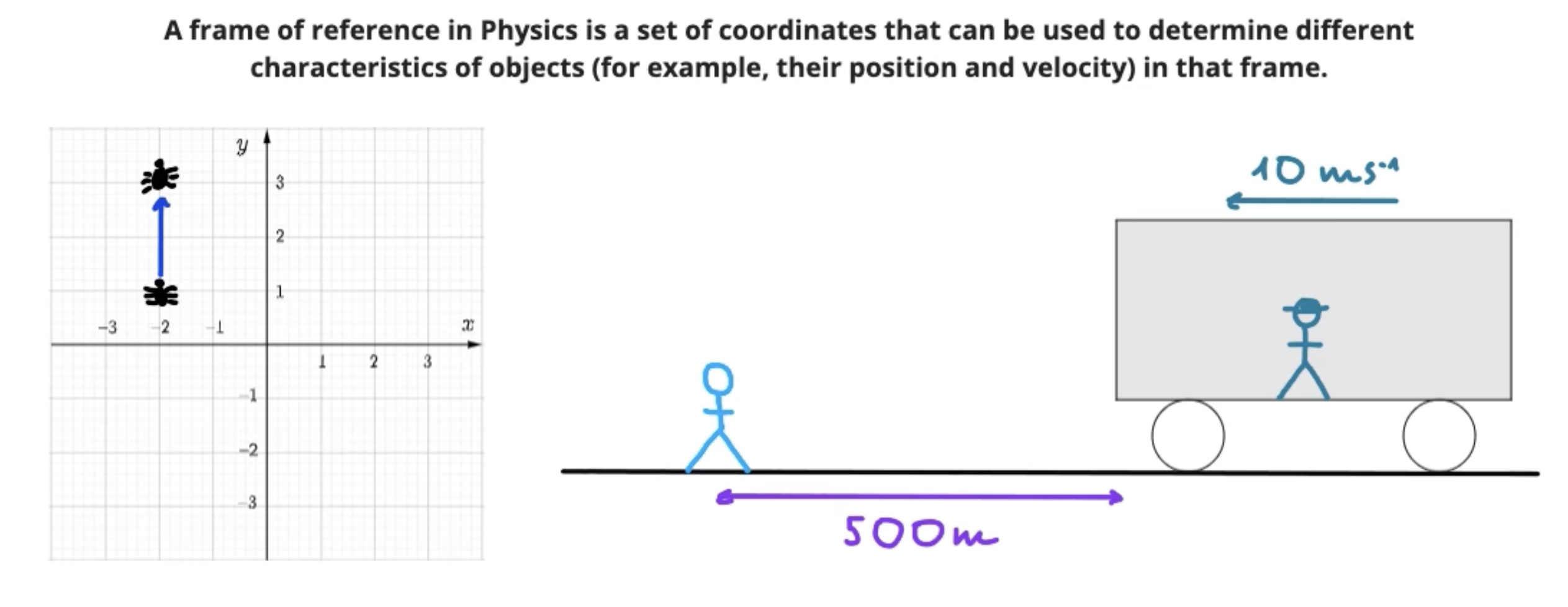
Inertial reference frame
Reference frame that is not accelerated
Either stationary or moving at constant velocity
Newton’s laws hold true in all inertial reference frames
Non-inertial reference frame
Reference frame that is accelerated
Newton’s laws do not hold true in non-inertial reference frames
Galilean relativity
Laws of physics are same in all inertial reference frames
Galilean position transformation equation
x’ = Position in moving reference frame
x = Position in stationary reference frame
v = Velocity of moving reference frame
t = Time in stationary reference frame

Galilean time transformation equation
t = TIme in moving reference frame
t = Time in stationary reference frame

Galilean velocity addition equation
u’ = Velocity in moving reference frame
u = Velocity in stationary reference frame
v = Velocity of moving reference frame

Newton’s first postulate
Space and time are fixed
Time interval between two events same in all reference frames
Newton’s second postulate
Two observers will make the same observations about the world from any inertial reference frame
Einstein’s first postulate
The laws of physics are the same in all reference frames
Einstein’s second postulate
The speed of light in vacuum is the same in all inertial reference frames
Proper time interval
Time measured between two events taking place at the same position in space in the reference frame they occur in
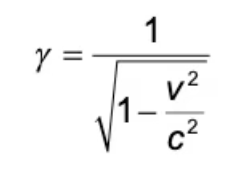
Lorentz factor equation
Gamma = Lorentz factor
v = Velocity of the moving reference frame
c = Speed of light
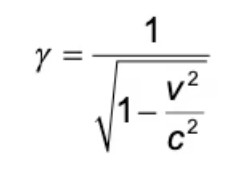
Lorentz factor equation derivation
Draw triangle representing movement of light beam in moving reference frame
Create 2 right-angled triangles
Equate hypotenuses of triangles to speed of light multiplied by time

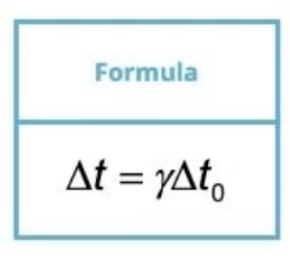
Lorentz factor
Denotes how much the time interval within a specific reference frame differs from the proper time interval
Used to calculate time dilation using following formula:
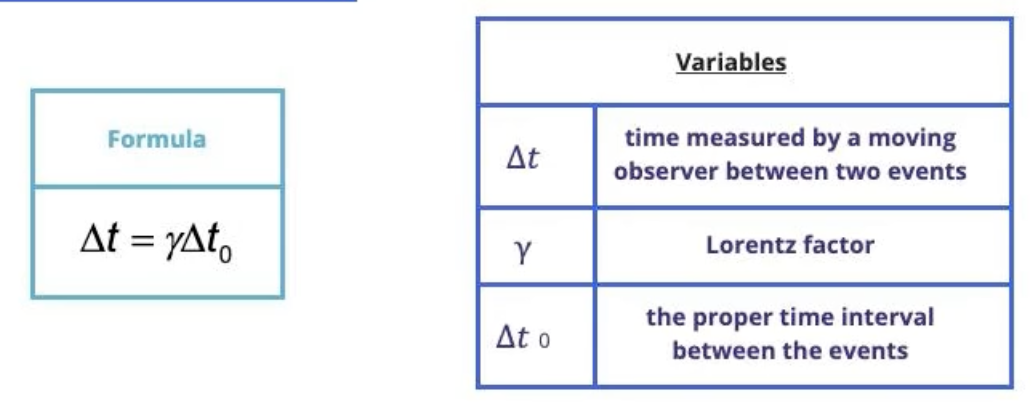
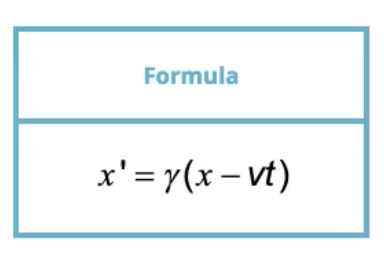
Lorentz position transformation equation
γ = Lorentz factor
x = Position in stationary reference frame
x’ = Position in moving reference frame
v = Velocity of moving reference frame
t = Time in stationary reference frame
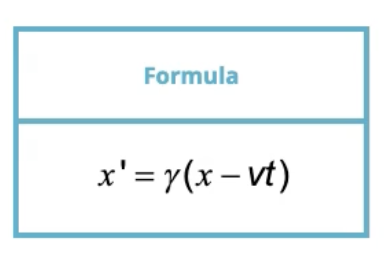
Lorentz time transformation equation
γ = Lorentz factor
t’ = Time in moving reference frame
t = Time in stationary reference frame
v = Velocity of moving reference frame
x = Position in stationary reference frame
c = Speed of light
Proper length
Measurement for an object in within a stationary reference frame
Length contraction occurs in reference frame where object is moving
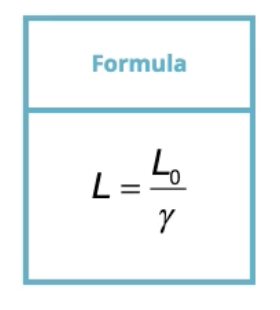
Proper length formula
L = Length in moving reference frame
L0 = Length in stationary reference frame
γ = Lorentz factor
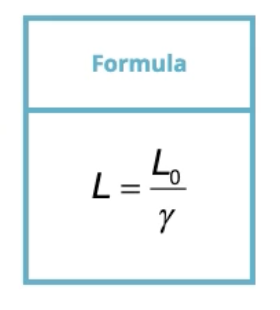

Lorentz velocity addition equation
u’ = Velocity of object in moving reference frame
u = Velocity of object in stationary reference frame
v = Velocity of moving reference frame
c = Speed of light
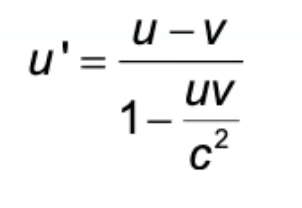
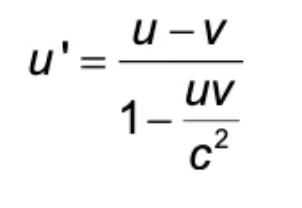
Lorentz velocity addition equation derivation
Write u in terms of x and t and u’ in terms of x’ and t’
Substitute in Lorentz equations for x’ and t’
Substitute in x = ut
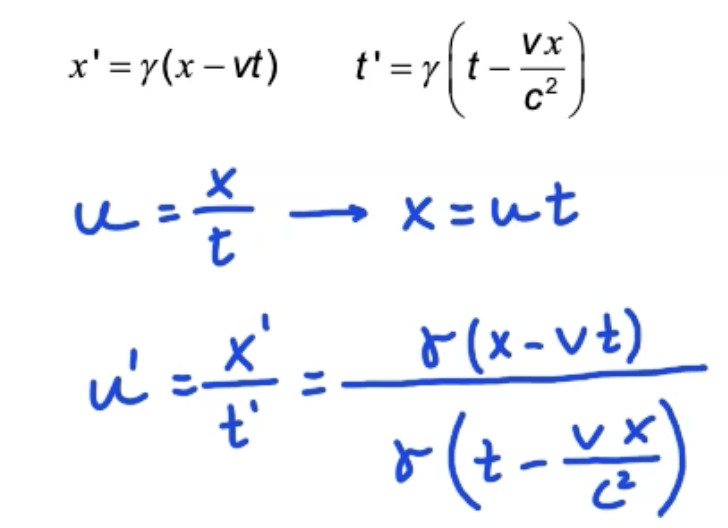
Spacetime interval
Space and time coordinates are not agreed upon between reference frames
Spacetime interval is invariant quantity, agreed upon by observers in all reference frames
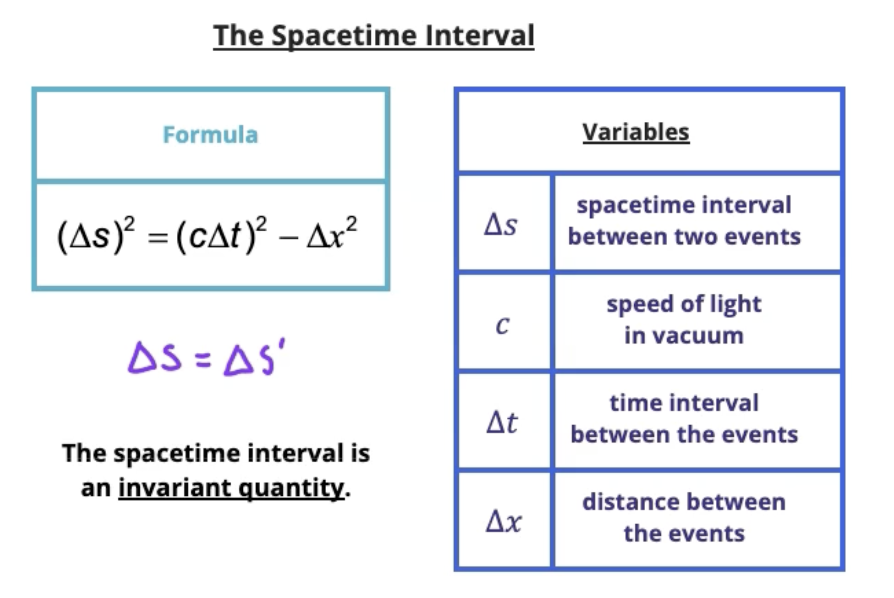
Muon decay experiment
Muon mean lifetime is 2.2 × 10-6 seconds
Muons travel at 0.995c
As they are created around 10km above the Earth’s surface, this means they cannot reach normally (only travel 660m)
However, due to time dilation, their lifetime in the Earth’s reference frame is 2.2 × 10-5 seconds
This means they can reach the surface, as they travel 6600m
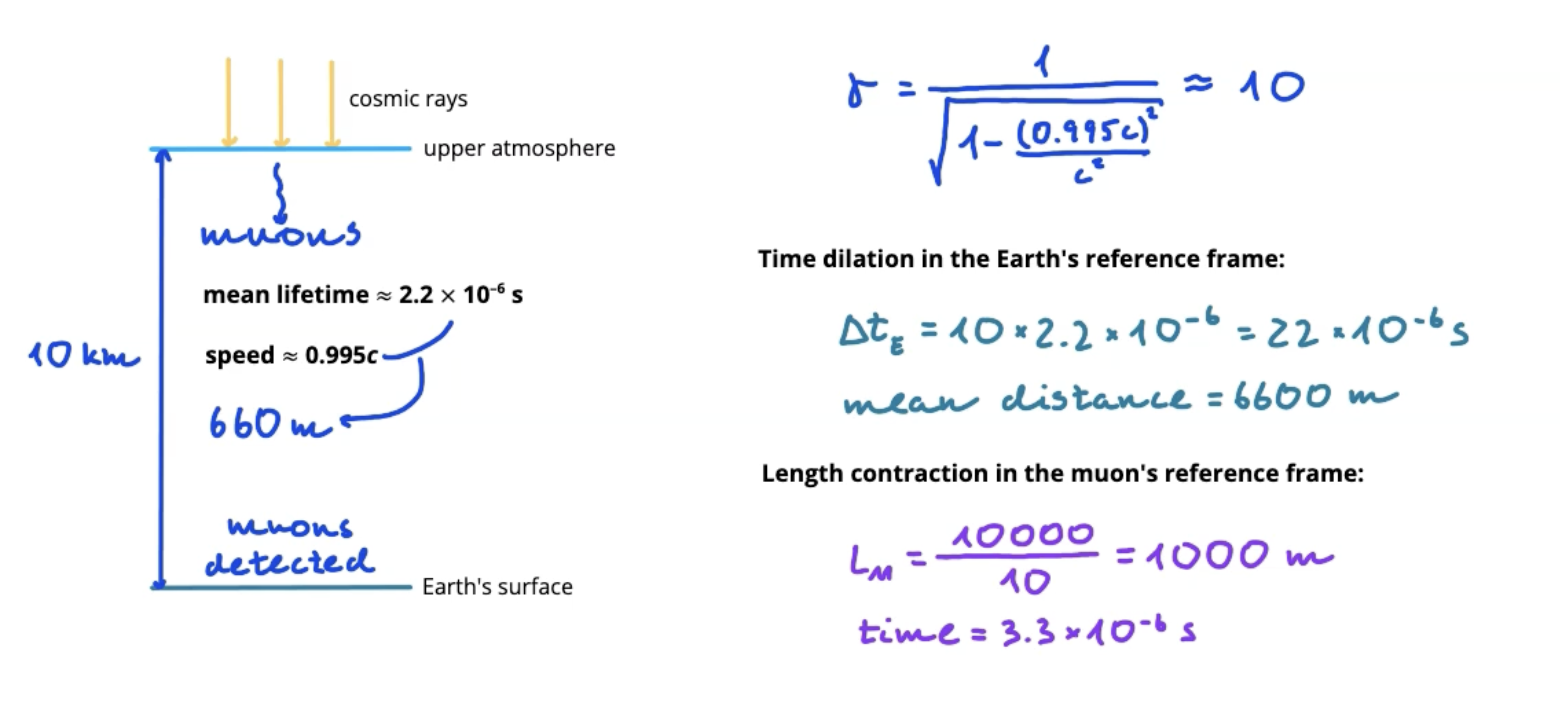
Spacetime diagrams
Represent one space dimension and one time dimension
Draw a line through simultaneous events, parallel to position axis
Draw a line through events at the same place, parallel to time axis
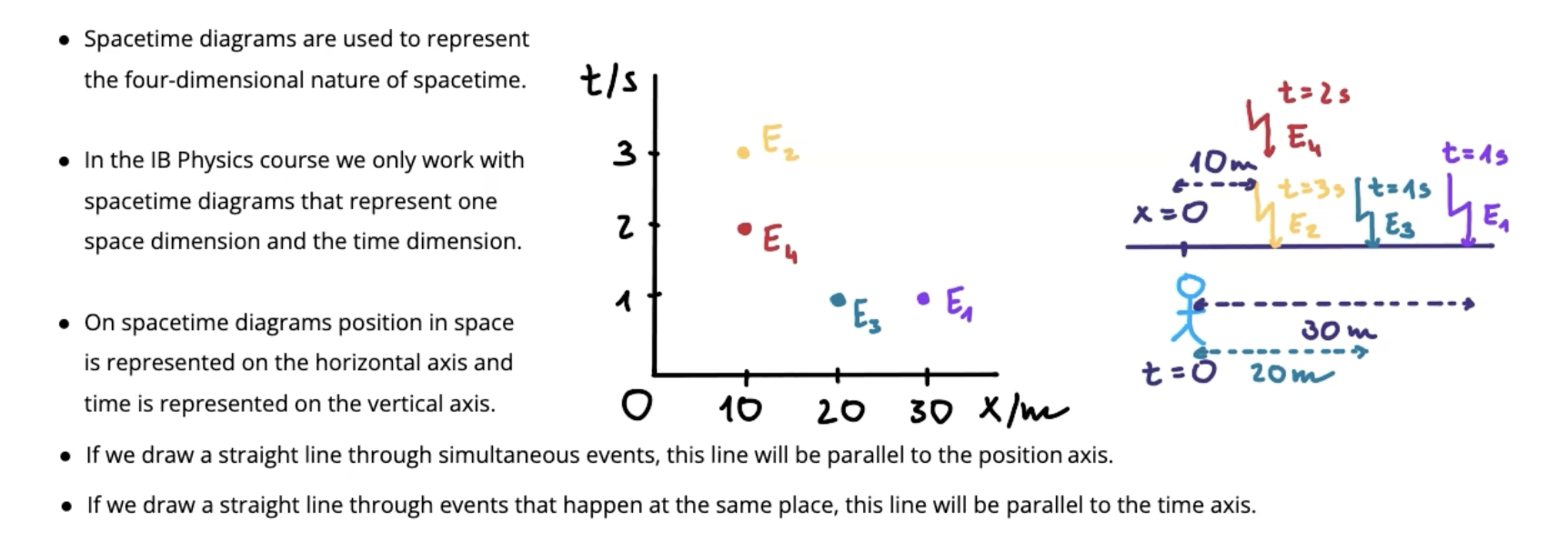
Interpreting spacetime diagrams
Vertical line parallel to time axis means object is at rest
Sloped straight line means object is traveling at constant velocity
Curved line means object is traveling with constant acceleration
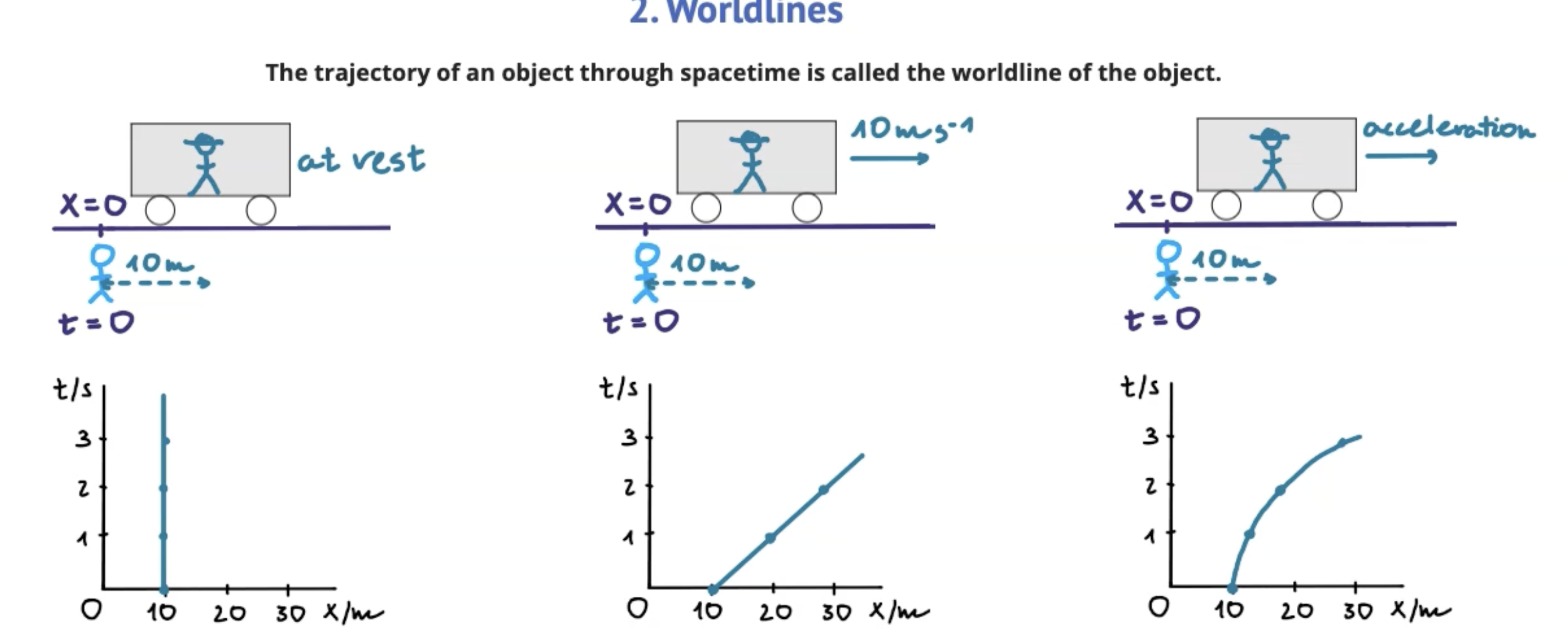
Spacetime diagram formula
Spacetime diagrams often modified with ct on y-axis instead of t
With ct on y-axis, both axes have same dimension (length)
Angle between ct axis and line can never exceed 45 degrees
Angle can be calculated using the following formula
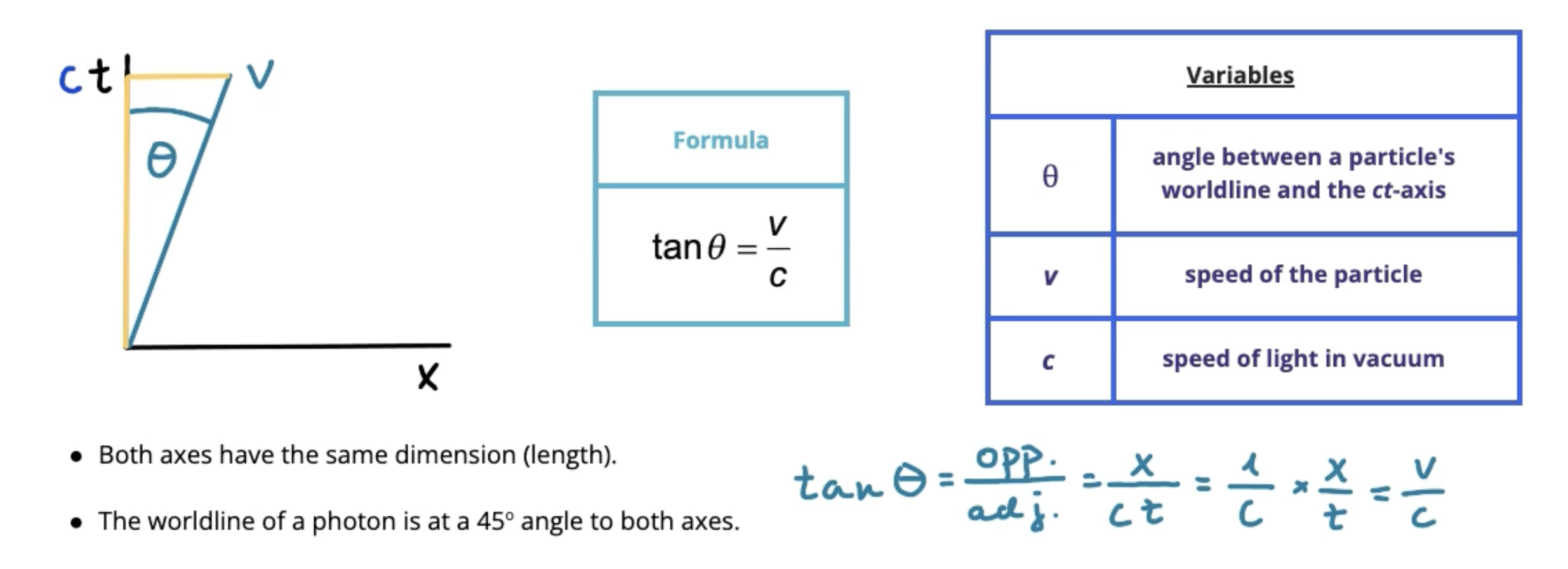
Combining spacetime diagrams
Gaps on stationary RF spacetime diagram are larger than moving RF spacetime diagram due to length contraction
Line representing light is always at 45 degrees
Moving spacetime diagram axis will be at an angle relative to stationary spacetime diagram axis when combined
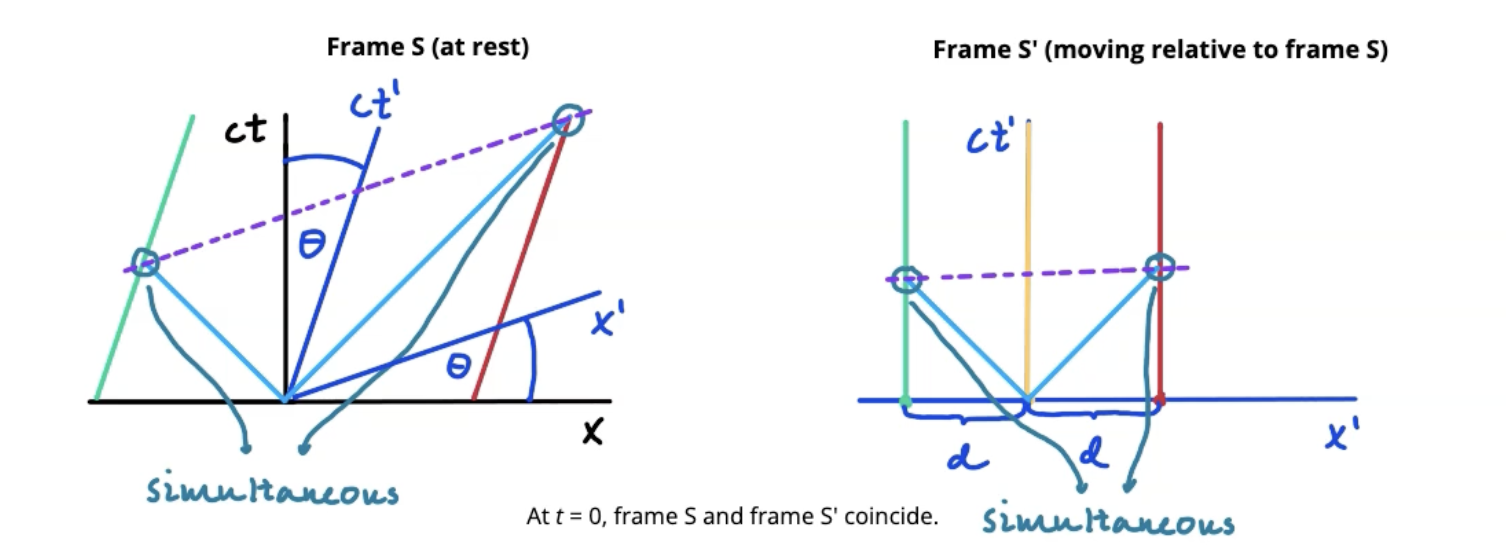
Length contraction on spacetime diagram
Draw parallel line to stationary ct axis connecting it to point on moving distance axis and measure to get scaled value
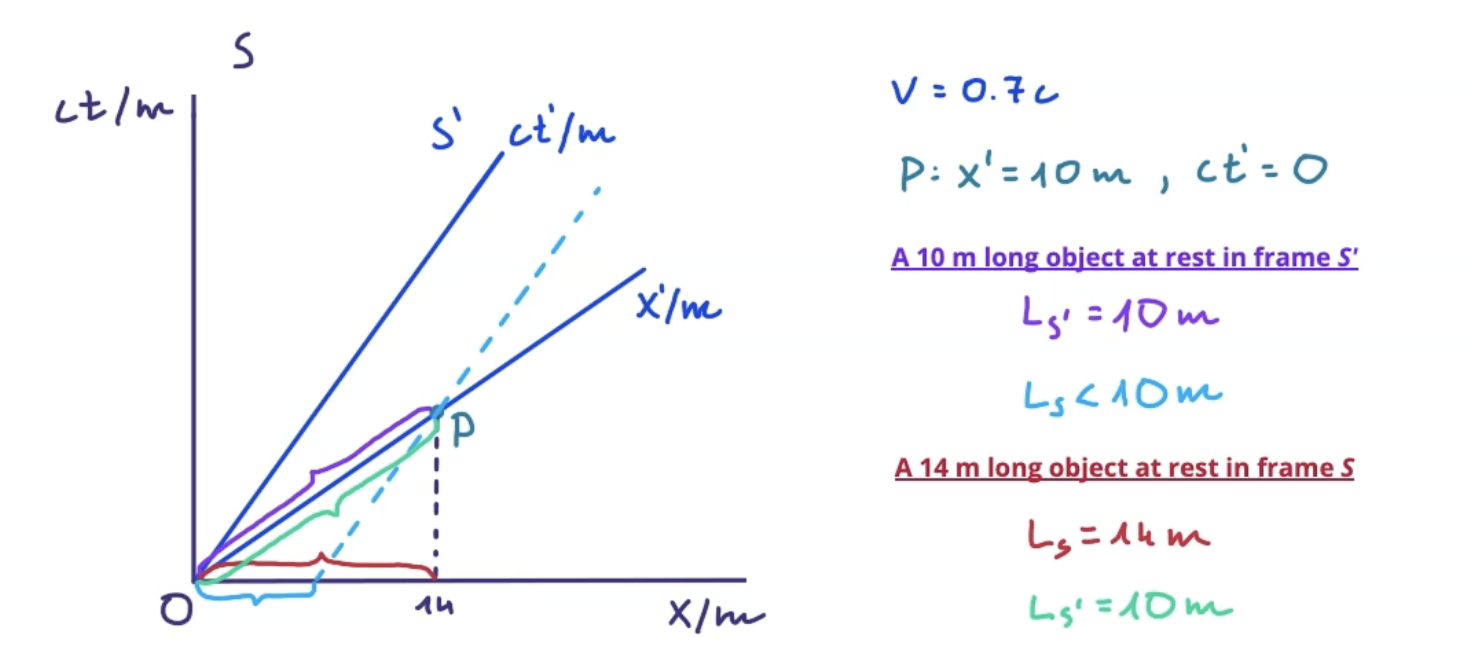
Time dilation on spacetime diagrams
Draw perpendicular line to stationary ct axis connecting it to point on moving ct axis and measure to get scaled stationary time value
Draw parallel line to moving distance axis connecting it to point on moving ct axis and measure to get scaled moving time value

Simultaneity
If Δx between 2 events is 0, then they will be simultaneous in all reference frames
Otherwise, they will not be simultaneous
Event whose light beam reaches first will happen first for stationary observer
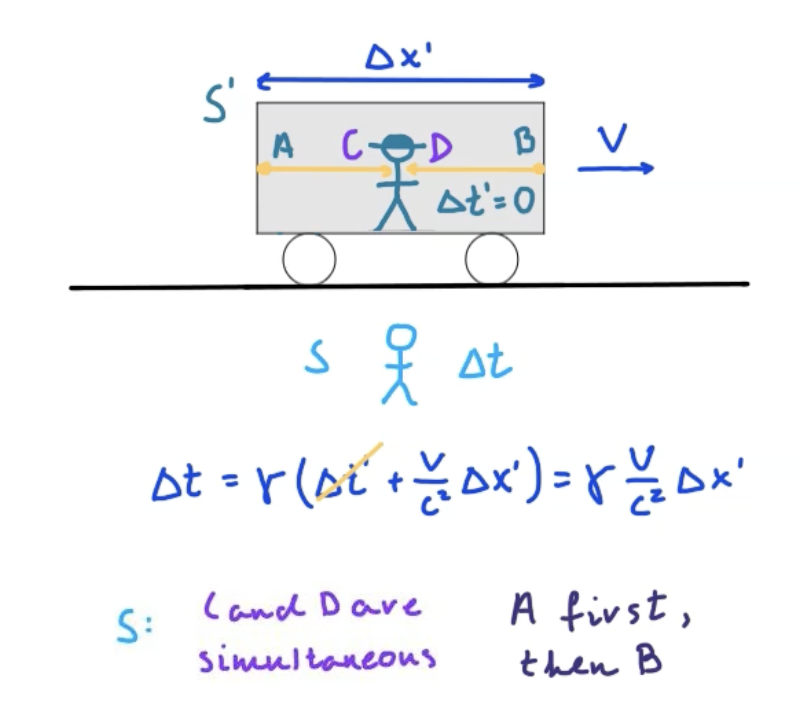
How to determine which event happens first in a moving reference frame using a spacetime diagram?
Draw lines parallel to moving distance axis through points representing events
Event whose line intersects the moving ct axis first occurs first
